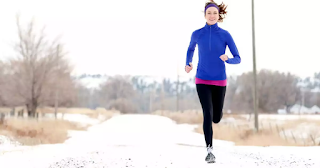According to personal trainers and exercise physiologists, the body’s primary goal is to maintain stasis, or stability, and that includes keeping a steady temperature. In the cold, the body needs to burn extra fat, to produce energy to heat it back up to the ideal temperature.
Working out in the cold weather can shake off some extra calories. During the winter, the body ramps up its production of a chemical called ATLPL, which helps it to store up fat for the evolutionary scarce season, so staying active in the winter is important to counteracting that.
Working out in the cold makes it difficult for the body to stay warm and burn a ton of calories, the cold acts as a ‘thermal stressor,’ forcing the body’s temperature regulation out of work. To keep the core, vital organs at the right temperature, blood flow to the extremities is reduced, and kept concentrated closer to the heart and internal organs.
The heart rate and metabolism slow, trying to save up energy and keep the warm blood in place. That’s when the shivering starts. Those shakes are a series of fast muscle contractions and releases, a way for the body to produce some extra warmth by burning energy stored in fat.
When you get into a relatively consistent, high intensity workout – though you’ll feel like you’re working harder at first, against your slower heart rate and metabolism – the body begins warming up from more robust fat burning. As your heart rate rises, blood and warmth return to your hands, feet and other extremities, and shivering is no longer necessary.
Once you hit that point, you’re burning calories as you would during exercise at any temperature. During the winter, the body crave extra simple carbohydrates found in sugary foods like baked goods and get vitamin D deficient spending too much time indoors. Getting some winter sun will boost your vitamin D to break those sweet indulgences.
Walking in moderately warm clothing on a cold day will keep the heart rate from getting high enough to cancel out the shivers, but enough activity is require for burning some fat for energy. Body temperature will be lower when you are closer to the cold while playing in the snow, making the body ready to fight to stay warm.
haleplushearty.blogspot.com


